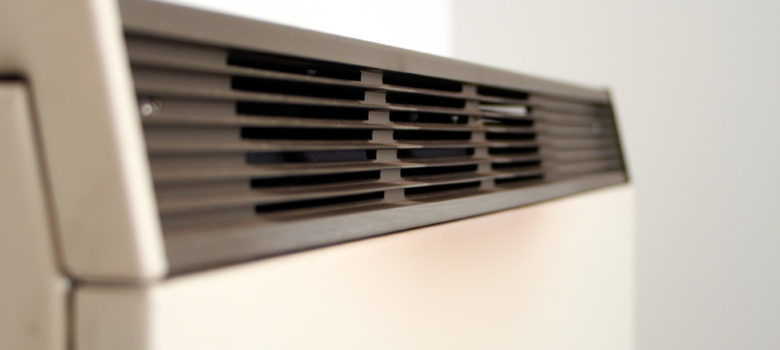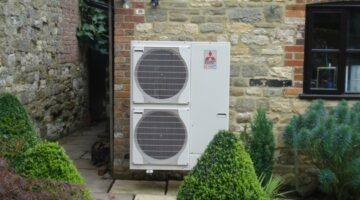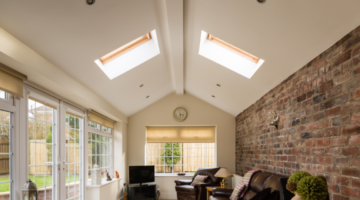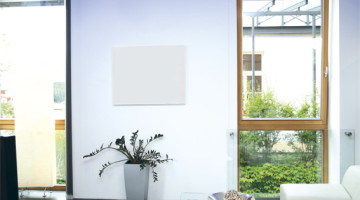
We’ve talked a lot about storage heaters here at the Green Age, but we know that a lot of people still have a lot of questions about how storage heaters work. If you haven’t used them before, they can certainly be somewhat intimidating to look at!
Best tariff for storage heaters
The most important thing to remember with storage heaters is that they work on a fixed dual-rate system. The key concept of storage heaters is that they use electricity and generate when it’s cheaper (at night time, when there’s low demand) and then release that heat during the day. That means you should be on a dual-rate electricity tariff. The electricity during the day will be more expensive than a fixed rate tariff, but during the night time is much cheaper. You can read more about energy tariffs here.
Storage heater controls
There are two basic controls on every storage heaters. Whether you have an old model from the 90’s and just a couple of simple dials, or a modern version with a digital display and lots of exciting (and confusing) buttons, you will ALWAYS have an input and output option.
 Storage heater input dial
Storage heater input dial
The input dial is there to control how much heat you want to store during the night. The higher you set the dial, the more electricity you’re using and the higher your bills. It’s important to balance your input sensibly and remember to change it with the weather – it should be set low (or off) in the summer and higher in the winter. There might be a certain level of trial and error here if you’re not familiar with the system. The aim is to have just enough heat to see you through the day without having to use the boost button.
Storage heater output dial
Again, it’s important here that you understand how the balance of heat in and out works. Unless you’re a real night owl, then it’s important to your output down to the lowest option when you go to bed. This stops the heater from warming an empty room and allows the storage heater to charge up with warmth for use the next day.
When day does roll around, this is when you can turn your output heat up as required. Do be mindful that your heater has a finite amount of heat stored (according to whatever you’ve set your input to), so it’s important to ration out the heat. If you crank up the heater to maximum first thing in the morning, all your usable heat will be used up well before the chilly evening rolls in. Try to remember to alter your heating to match your lifestyle – if you’re out all day then turn your output down, for example. This is a good rule for all heating methods, but is especially important when it comes to storage heaters.
Storage heater boost button
We get calls all the time from people with storage heaters that can’t figure out why their bills are so high, and it almost always comes from the innocent-looking boost button. The boost button is there to allow you to channel more electricity into the heater and create more heat even when you’ve used up all the warmth that was stored overnight. However by doing this, you’re using energy directly from your mains at a much, much higher rate. On some tariffs, this can be as much as 4 times the cost of nighttime energy. If you’re using the boost button with any frequency then you may want to consider turning your input dial up and your output down.
Think we missed something? Do you have a different opinion?
Comment below to get your voice heard…












Hello, I’m trying to find out just how much energy is stored by these heaters? I realize it varies by size but what is the range?
Hello, little late to the discussion however I do have a question, curiously despite multiple searches I can’t find any mention of how much energy is stored in any given ‘ storage heaters’? Ya I get that they have a heat sink medium , ie ; thermal mass, but there’s never , that I can find, mention of how much is stored? I’d appreciate an email from anyone on the matter. Thanks much in advance.
Mark
Think I read something worrying of yours ( when visiting utube)
” If you charge the heater up , during the day ( ie outside offpeakhours) then you will be using expensive electricity”
Does that mean ONLY turn the INPUT dial up ,physically, at 11.30pm—- then turn it down again,physically next morning at 7.30am( my offpeak hours)
I will get no sleep! Staying up until 11.30, then dashing down in the morning to turn INPUT down, to stop the INPUT charging up as you call it, during the day.!!!
Very confused !!
Trisha